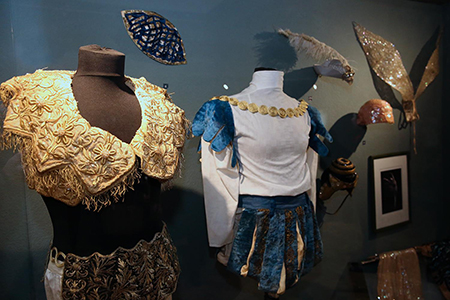Tbilisi museum reopens to honour legacy of dancer Vakhtang Chabukiani

Dance enthusiasts visiting Georgia’s capital of Tbilisi can now find thousands of items illustrating the life and career of legendary late Georgian ballet dancer Vakhtang Chabukiani at the reopened museum of the artist.
The museum on Aghmashenebeli Avenue now presents the first ever display of costumes Chabukiani wore in celebrated ballet productions including Raymonda, La Bayadere and Othello.
The collection has been added to existing historical material including photographs, personal items and a library at the apartment where the famous 20th Century dancer and ballet master once resided.

The museum has reopened to the public after a month-long shutdown for renovation. Photo: Tbilisi City Hall.
The venue was unveiled after a month-long shutdown for renovation and restocking of its collections on Monday to mark the 107th anniversary of the birth of Chabukiani.
The Union of Museums – a network of nine independent venues in Tbilisi including the Chabukiani museum – said the collections of the venue now featured over 4,500 items of all types.
The reopening of the museum, founded in 2000, was attended by Chabukiani’s former partners and colleagues.

The costume collection has been added to the already existing display of personal items and photographs illustrating Chabukiani’s life and career. Photo: Tbilisi City Hall.
Born in 1910, Chabukiani graduated from the Tbilisi Ballet Studio of Italian teacher Maria Perini in 1924 before joining the Tbilisi State Opera and Ballet Theatre as a dancer.
He later studied at the Leningrad (now St. Petersburg) Choreographic School in Soviet Russia and debuted at the prestigious Kirov State Academic Theatre of Opera and Ballet in the city in 1929.
The Georgian artist’s rise to prominence was underlined by his casting in some of the most famous classical ballet productions in Russia including Swan Lake and Don Quixote. Chabukiani partnered with other famous Soviet dancers including Galina Ulanova and Tatyana Vecheslova in these productions.

A display of Soviet-era theatre posters announcing Chabukiani in ballet shows. Photo: Tbilisi City Hall.
Returning to Georgia in 1941, Chabukiani worked to lay the foundations of professional Georgian ballet. As a ballet master he combined classical ballet with Georgian folk dance to create a national ballet style. The Tbilisi State School of Ballet Art – the central professional ballet education venue in the capital – is named after the celebrated dancer and ballet master.
The popular performer was awarded the prestigious title of People’s Artist of the Soviet Union in 1950 and performed at ballet shows in Georgia and the Soviet Union as well as international tours in Europe and the United States.
Chabukiani died in 1992 in independent Georgia and is buried at the Mtatsminda Pantheon of Writers and Public Figures in the city.
 Tweet
Tweet  Share
Share